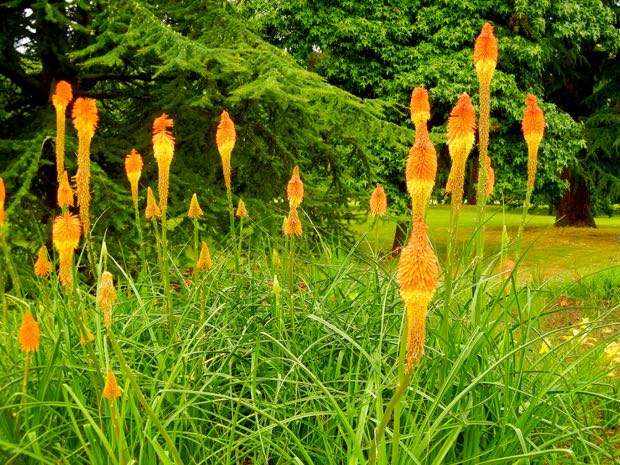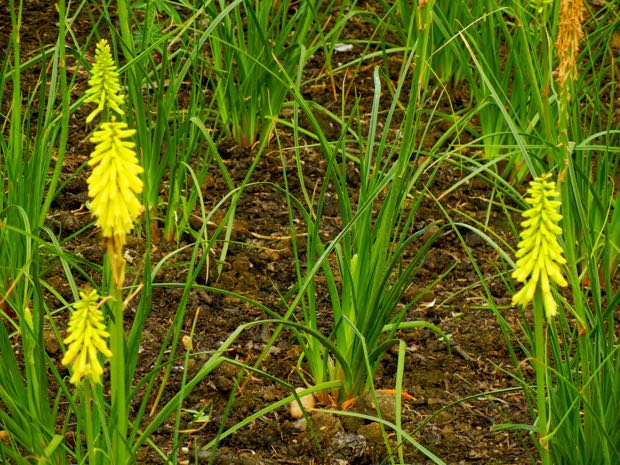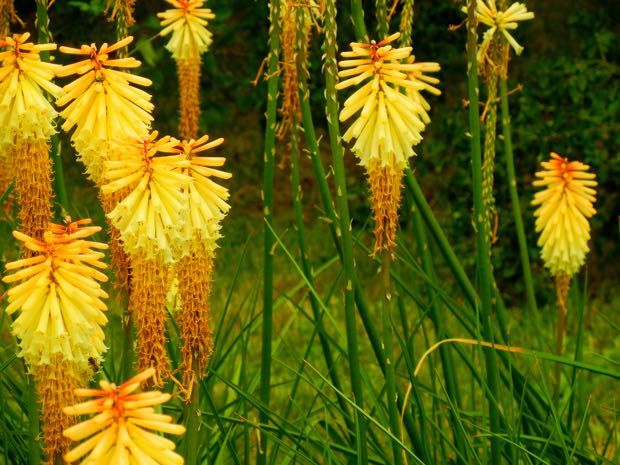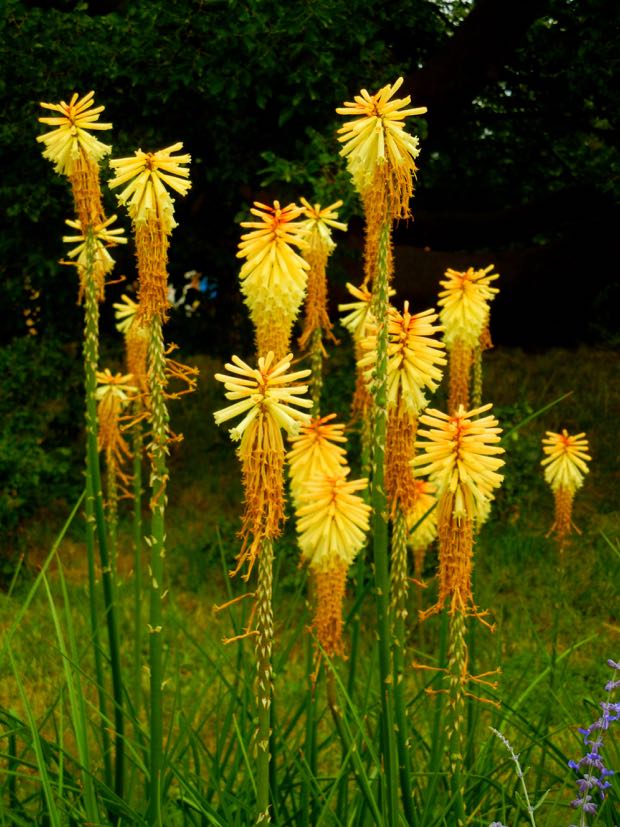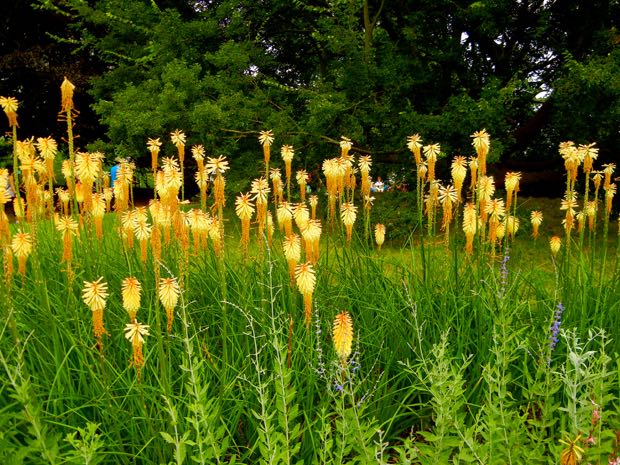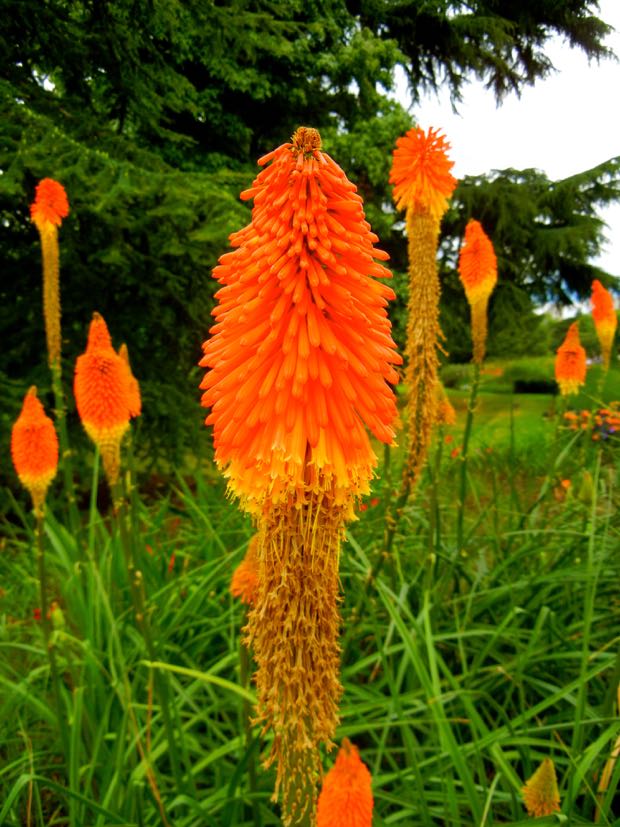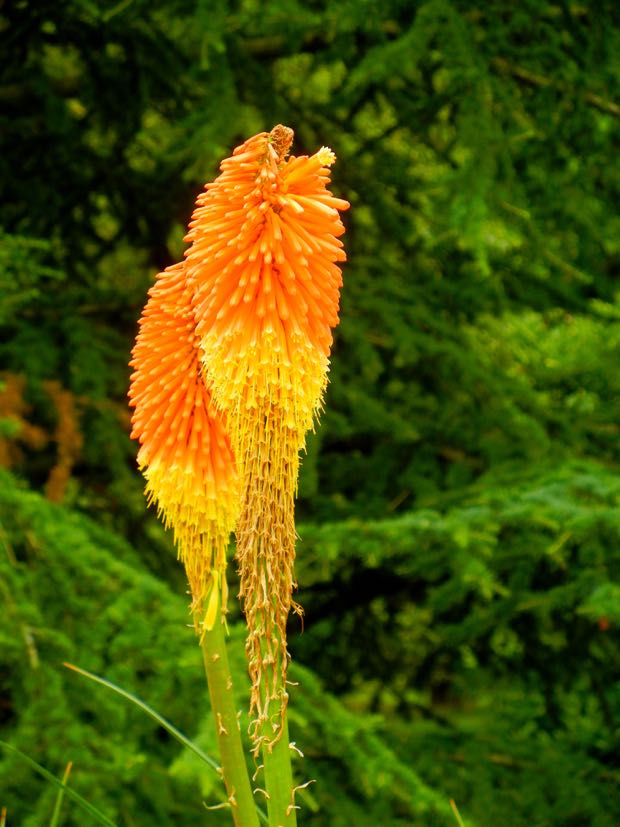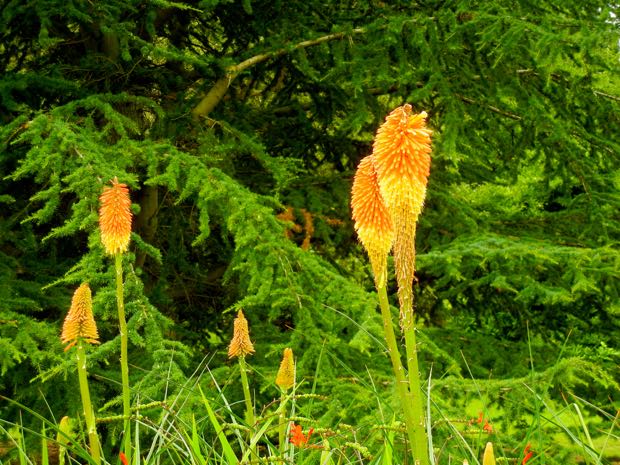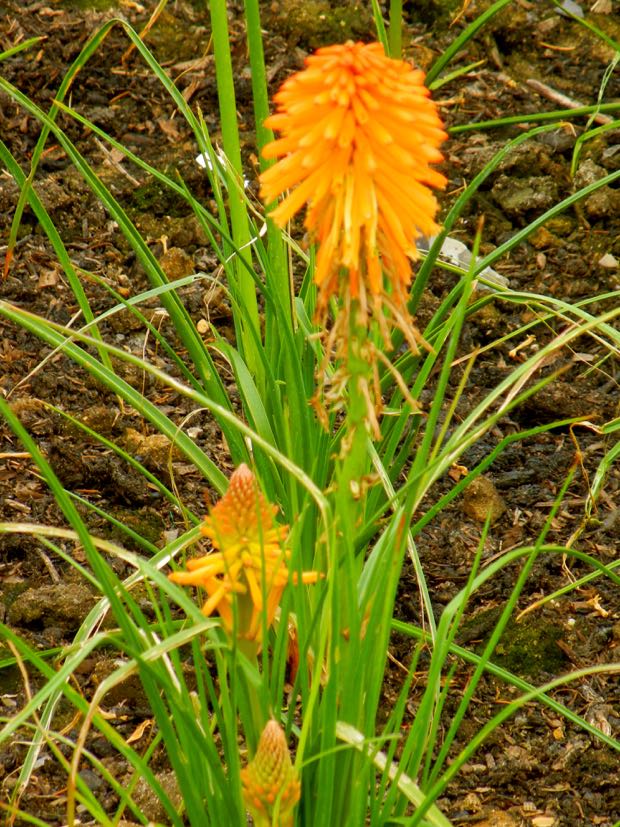Kniphofia: The Exotic Torch Lily
Kniphofia, also known as Torch Lily, Tritoma, Red Hot Poker, Knofflers, or Poker Plant, is an extraordinary perennial that graces gardens with its vibrant blooms throughout the summer and fall. This captivating plant belongs to the Asphodelaceae family and is native to Africa. It is named after Johann Hieronymus Kniphof, a German botanist and physician who lived in the 18th century.
Appearance and Flowering
Kniphofia species and hybrids feature slender, grass-like leaves ranging from 10 to 100 cm (4 to 39 inches) in length. Evergreen varieties showcase broader, strap-shaped foliage that can reach up to 1.5 m (5 ft) in length. Above the foliage, these plants produce upright spikes adorned with brightly colored flowers in shades of red, orange, and yellow, often displaying bi-colored petals. The blooming flowers attract bees, sunbirds, hummingbirds, and nectarivores such as hummingbirds and New World orioles.
Growing Conditions and Characteristics of Kniphofia:
Kniphofia plants exhibit narrow, grass-like leaves and boast a variety of colorful blooms in shades of yellow, red, and orange. Some species even display bi-colored flowers. These stunning flowers grow on upright spikes. Kniphofia is a long-lived plant that can reach heights of about 30 inches or more. It thrives when planted in sunny locations and requires moist, fertile, and well-drained soil. It is important to select a spot that doesn’t become overly saturated during winter. After flowering, deadhead the plant and trim it in spring to maintain its neat appearance. Bees, hummingbirds, and coastal gardens particularly appreciate this plant due to its copious nectar production.
Light and Soil Requirements: For the best flowering performance, grow Kniphofia in full sun. Although they can tolerate some shade, regions with hot summers may benefit from providing afternoon shade. These plants require well-drained soil to thrive. While they are generally resilient perennials, poor drainage can be detrimental, leading to root rot, especially during winter.
Watering and Temperature: Once established, Kniphofia has modest water needs. Water frequently after planting and reduce the frequency in subsequent seasons. Indigenous to South Africa, these plants can withstand cold climates as far north as zone 5, particularly when provided with good drainage and mulch. In colder regions, protect the plant by covering its crown with mulch during winter.
Fertilization and Planting: Kniphofias typically do not require frequent fertilization if planted in nutrient-rich soil. However, if the soil is poor, apply a slow-release fertilizer in the spring to promote abundant blooms. When planting Kniphofias, select a site with full sun exposure and well-drained soil. The soil should ideally be slightly acidic to neutral. If the soil is alkaline, consider adding peat moss or compost to the planting hole. Space the plants 18-24 inches apart to allow for adequate growth.
Propagation and Maintenance:
Kniphofia can be propagated from seeds, but it’s advisable to look for seeds that will flower in their first year. Another effective method is division, which is best done in spring and works well for hybrid varieties. Kniphofia plants are generally resistant to diseases and pests. However, it’s essential to watch out for slugs, snails, root rot, and aphids. To ensure optimal growth and prevent issues, provide adequate drainage, and maintain a healthy plant environment.
Deadheading, Cutting Back, and Pest Management: Regular deadheading, the removal of spent flowers, encourages the plant to produce more blooms. Simply pinch off the faded flower heads at the base to promote continuous flowering.
In the fall, after the plant has finished blooming, it’s beneficial to cut it back to the ground. This helps the plant prepare for winter and promotes healthy regrowth in the following season.
While Kniphofia plants are generally disease-resistant, they may be susceptible to pests such as aphids, mealybugs, and scale insects. If you notice any infestations, treat them with an appropriate insecticidal soap or neem oil to keep the pests under control.
Winter Protection and Propagation:
If you live in a cold climate, providing winter protection for your Kniphofias is essential. Before the first frost, cover the plants with a burlap sack or other protective material to shield them from frost damage.
Kniphofias can be propagated through division or by seed. The division is the easier method and is best done in spring. Carefully dig up the plant and divide it into two or more sections, ensuring that each division has at least one root system and a few leaves. Replant the divisions in their new locations, water them well, and they will establish themselves.
Alternatively, you can sow seeds directly in spring as soon as the ground can be worked. Lightly cover the seeds with about 1/8 inch of soil and expect germination to occur within 5 to 10 days.
By following these guidelines for deadheading, cutting back, pest management, winter protection, and propagation, you can ensure the healthy growth and abundant flowering of your Kniphofia plants. Enjoy the beauty and exotic charm they bring to your garden!
